Into the Wild
Red wolves are making a comeback in North Carolina
BY Pat Bradford
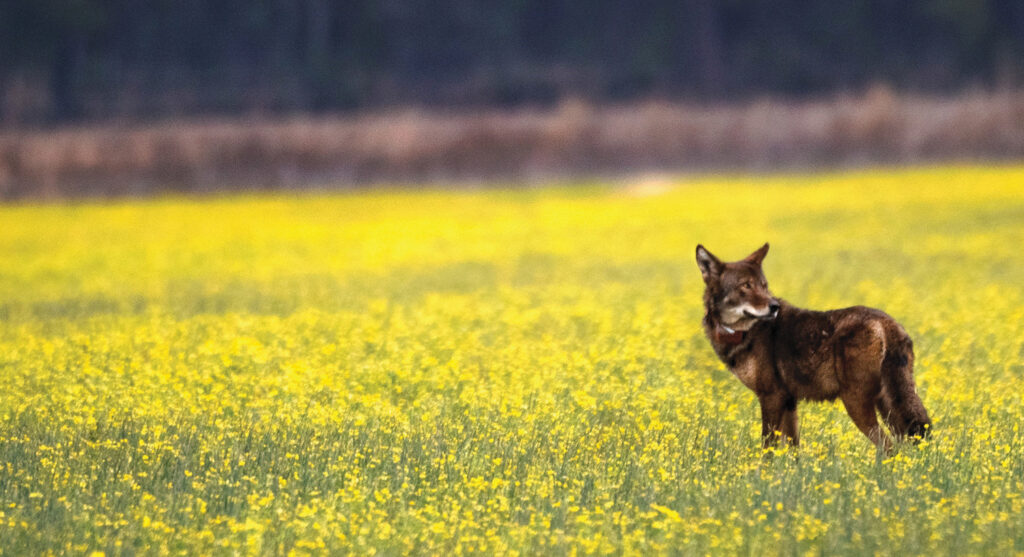
By the late 20th century, the red wolf population had almost been wiped out, victim of an intensive predator control program as well as destruction of its habitat. The only states where they were found in the wild by the late 1970s were Texas and Louisiana, where they survived in the coastal prairie and marshlands.
First designated as threatened under the Endangered Species Preservation Act in 1967, they are currently listed as endangered under the Endangered Species Act of 1973.
The U.S. Fish and Wildlife Service began efforts to conserve and recover the red wolf through trapping wild wolves for captive breeding with the intention of reintroducing the species in the wild. A Species Survival Plan (SSP) began in the early 1970s with 14 captured red wolves, established at Point Defiance Zoo and Aquarium in Tacoma, Washington.
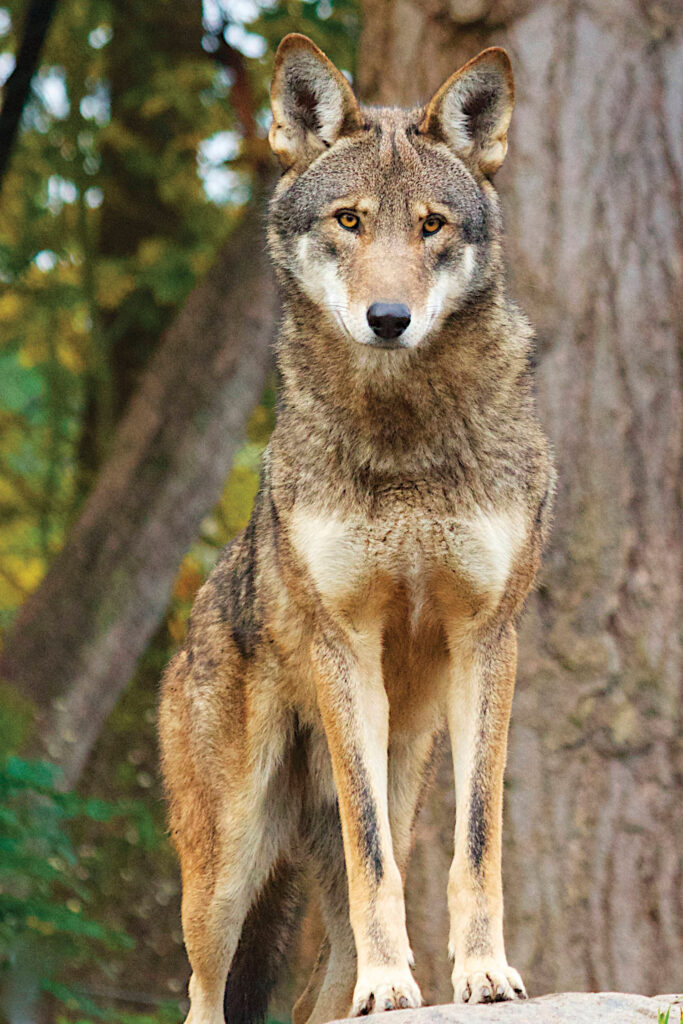
In 1990 an isolated island off the Gulf Coast of Florida became a propagation site for red wolf pups. The thought was that acclimating juveniles to the wild would prove beneficial when they would be strategically translocated into the North Carolina coastal area.
Recovery efforts in North Carolina began in earnest with the release of red wolves from the SSP program into the Alligator River National Wildlife Refuge (NWR) in 1987. More than 60 adults were released between 1987 and 1994 into refuges on the Albemarle peninsula in Beaufort, Washington, Tyrrell, Dare and Hyde counties.
By the mid-1990s, the program had been deemed a success. It was acclaimed by the wildlife service as “the first time a large carnivore had been declared extinct in the wild and then reintroduced in the United States.”
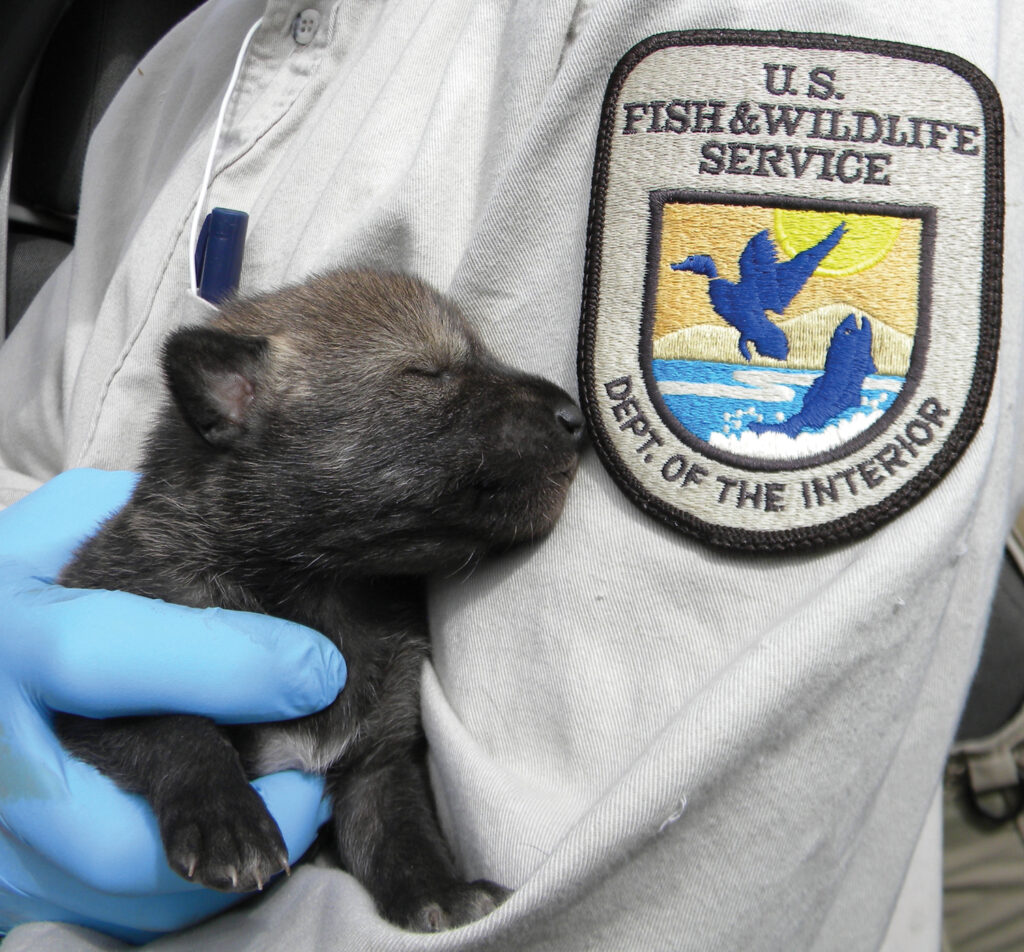
However, the reintroduced red wolf population in North Carolina peaked at 120 animals in 2012, and then rapidly declined due to low birth rate and mortality. A litter of six pups — four females and two males —born in the Alligator River National Wildlife Refuge in Dare County on April 19, 2022, was the first litter since 2018. During the 2022 breeding season 28 pairs were established and 46 pups were born in 13 litters, but just 29 survived.
At least nine wolves were released in February and March of 2022. A family group of five was released in the Pocosin Lakes National Wildlife Refuge, located in the Inner Banks on the Albemarle-Pamlico peninsula in Hyde, Tyrrell and Washington counties, while two pairs were released in separate areas of the Alligator River National Wildlife Refuge.
The red wolf recovery program estimates there are between 19 and 21 red wolves in North Carolina today, with 10 known via radio collars.
In July 2022, approximately 243 red wolves were being kept in 49 facilities across the country.
The red wolf’s range once extended from Texas to New York. Ranging from 20 to 80 square miles to find food, they eat available prey, which can include whitetail deer, raccoons, rabbits and rodents.
Adults can weigh between 45 and 80 pounds, standing about 26 inches tall at the shoulder and approximately 4 feet long. They are mostly brown and buff colored with some black on their backs and often a reddish color on the ears, head and legs. They have wide heads with tall, pointed ears.
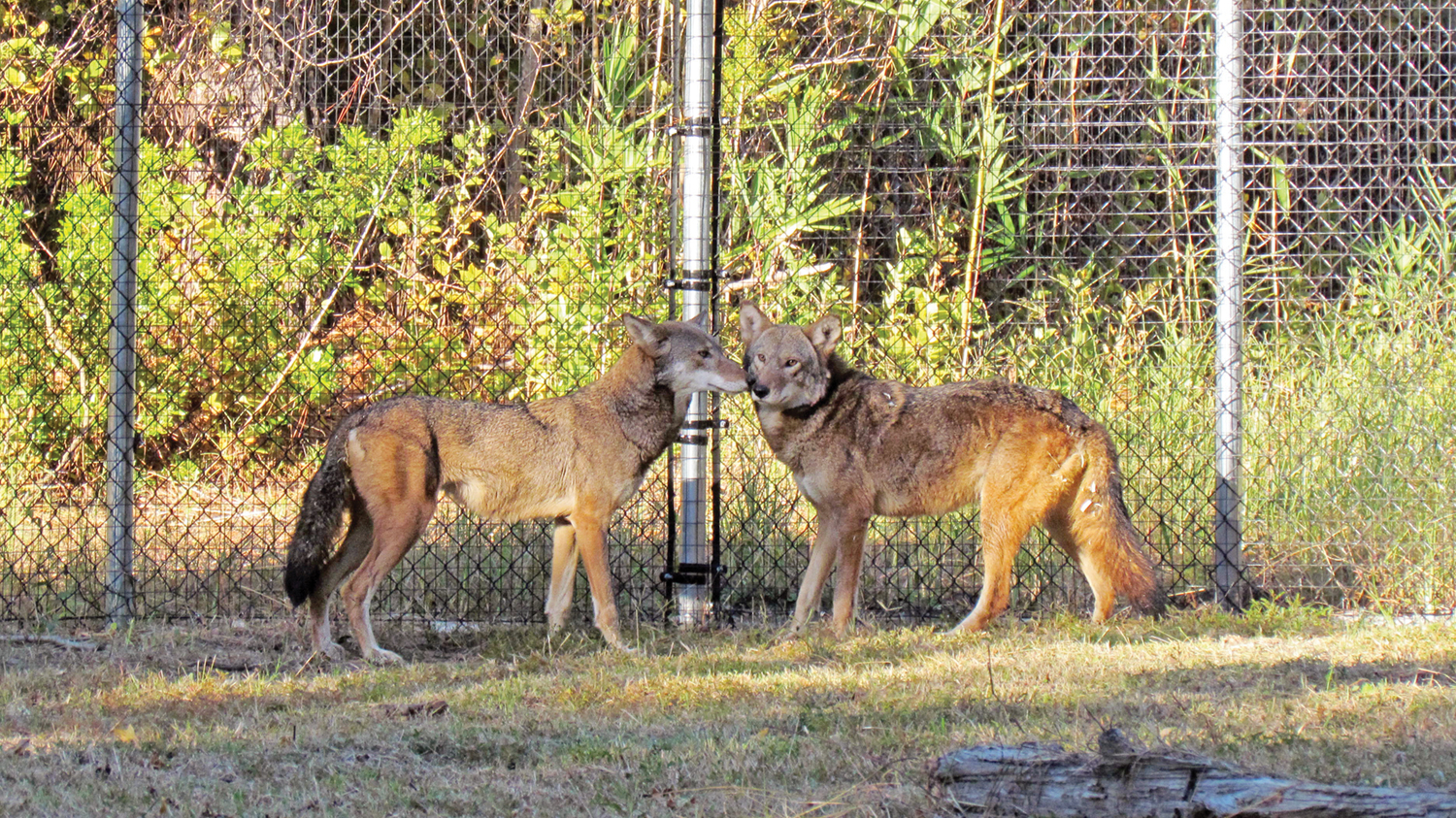
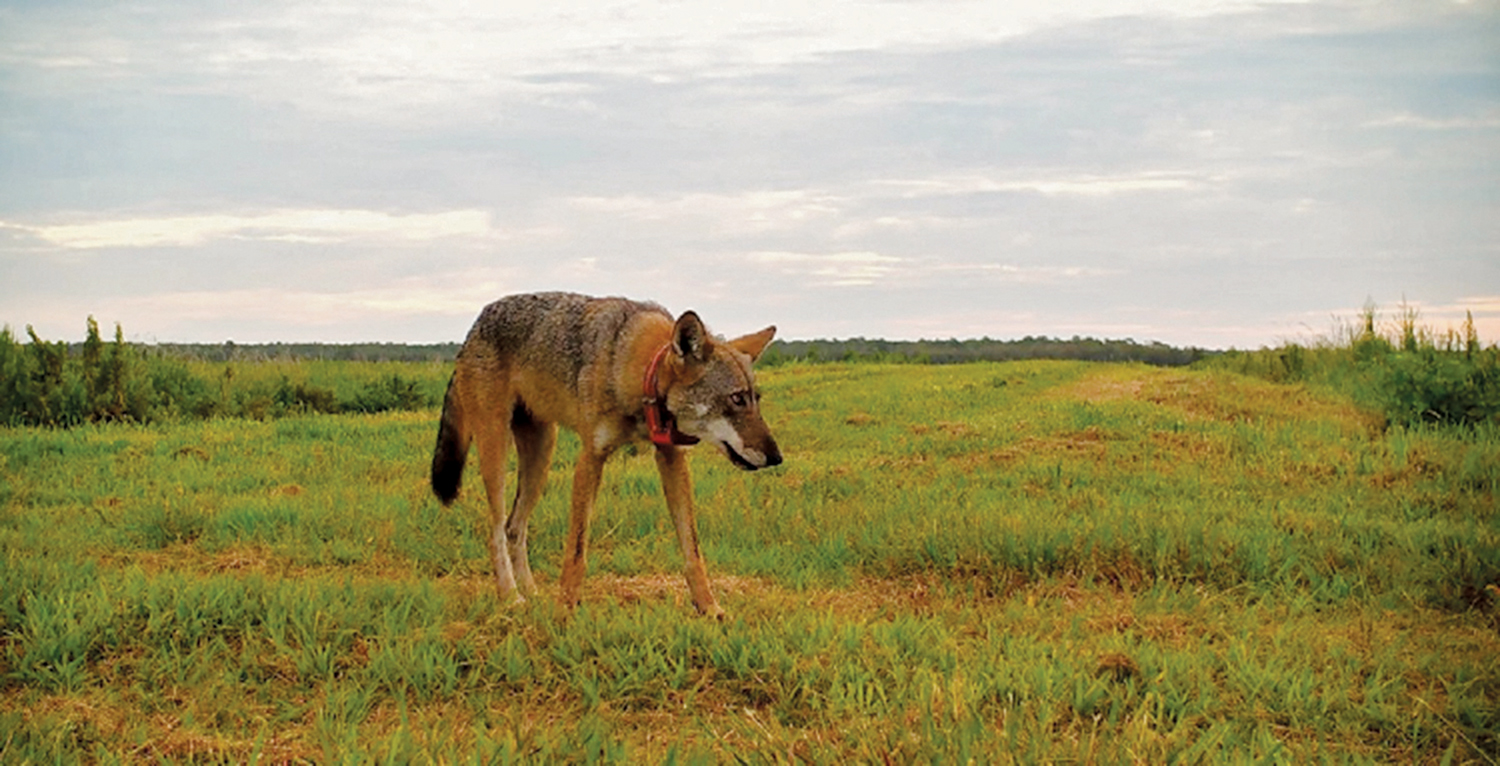
Red wolves are elusive and are most active at dusk and dawn. They live in packs consisting of a family group of five to eight including a breeding adult pair and any offspring. Older offspring assist in pup rearing, leaving the pack at 1 and 2 years old to form their own packs.
They form lifelong bonds and mate only once a year in February. Pups are typically born in April or May.
Mortality among red wolves is most commonly attributed to gunshot. Each death is investigated. A 2020 federal court ruling placed a permanent injunction against the taking of red wolves without demonstrating a threat to human safety or the safety of livestock or pets.
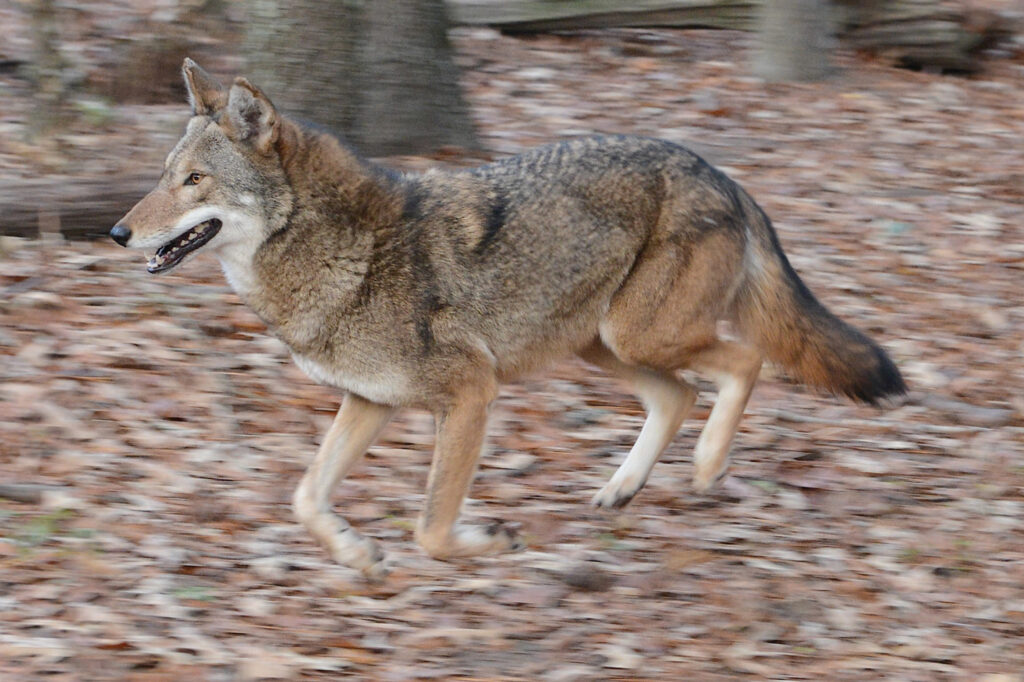
The release of captive red wolves from remote acclimation pens in North Carolina from early February through early April 2022:
February 8, 2022
Red wolf pair (2272F and 2141M) was released in the north Alligator River National Wildlife Reserve
March 15, 2022
Red wolf pair (2262F and 2157M) was released in the south Alligator River National Wildlife Reserve.
March 31, 2022
A family group of five (2133F, 2145M, 2340F, 2339M and 2384M) was released in central Pocosin Lakes National Wildlife Refuge
April 4, 2022
A wild female (2280F) and captive-born male (2267M) were released within her territory in east Pocosin Lakes National Wildlife Refuge.
To report a suspected red wolf sighting call the red wolf hotline at
855-496–5837 OR red wolf@fws.gov
— U.S. Fish and Wildlife Service


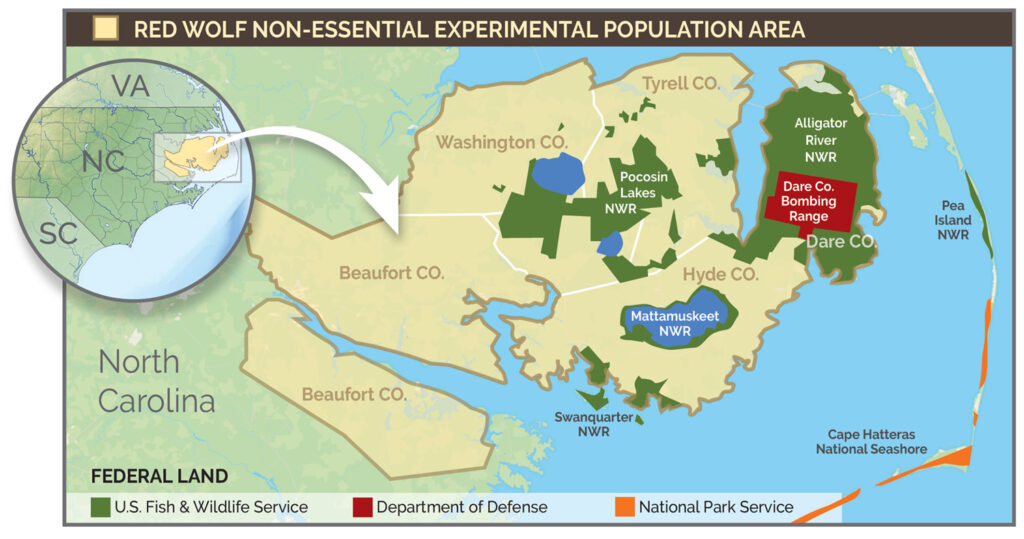
I am headed to the Refuge in two weeks. Is there a place to observe the wolves – or at least an area that they inhabit in the wild? I was hoping to take my chance and stake out a place on a road to sit and watch. I realize the chances are poor, but I need to start somewhere. it Appears the north end of the Refuge, away from the bombing range is better?
Thank you for any leads you can provide.
Sincerely,
Mark